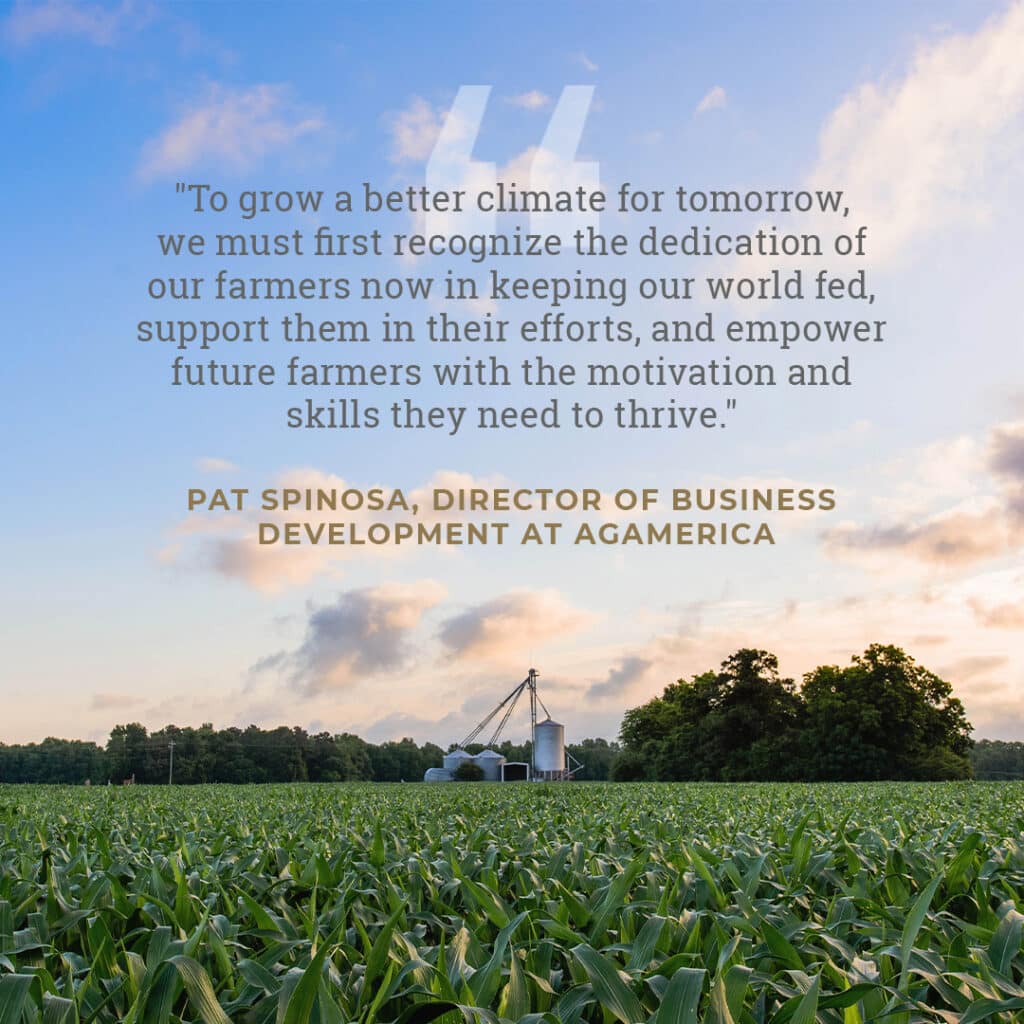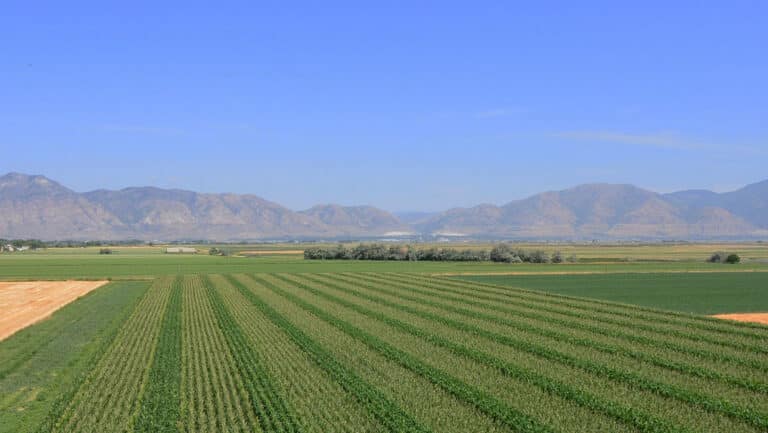National Ag Day 2023: Growing a Climate for Tomorrow
A farm crisis is brewing—and farmers need our help.
March 21st is National Ag Day, and according to the Agriculture Council of America, it’s a time “to recognize and celebrate the abundance provided by agriculture.”
Recognizing the importance of our nation’s farmers is critical now more than ever. The COVID-19 pandemic was a wake-up call for many people on the fragility of our global food chain and the importance of a resilient domestic food system.
This year’s theme for National Ag Day is “Growing a Climate for Tomorrow”, and much of the discussion is being centered around how farmers can support a more sustainable future for our planet.
But AgAmerica begs the question, how can we better support farmers in doing this and what’s holding them back?
The Farmer Pipeline Challenge
The average age of the farmer is increasing, up 1.2 to 57.5 years from 2012 to 2017. While interest in our food system is growing in younger generations, lack of financial and technical support can make it a challenging industry to join without generational experience.
Because of these barriers to entry, a farmer pipeline crisis is brewing.
Understanding the barriers standing in the way of the next generation of farmers is the first step in ensuring they have the support required to grow a better climate for tomorrow. The second step is identifying the gaps in support that are exacerbating these barriers. From there, we can begin to fill in the gaps to ensure American farmers and our domestic food system is supported for years to come.
Using his personal background in agriculture and professional experience in land loan financing, AgAmerica’s Director of Business Development Pat Spinosa shared some of his thoughts on this complex topic and insights into the top barriers young farmers face in their mission to feed the world.
Here’s what he had to say.
Barrier #1: Knowledge Gap
To be an advocate for agriculture, it’s essential to first understand its fundamentals. One American farmer feeds 166 people, meaning that less than one percent of the population carries the responsibility of keeping the rest sustained. This has led to a lack of personal connection to the farm and created misunderstanding for many regarding the value of agriculture in our daily lives.
How do we change this? Agricultural education starts in our school system. Schools often share agriculture education only with students who are considering careers in agriculture or pursuing vocational agricultural studies, which means many who aren’t raised in the farming community do not realize the numerous career opportunities available in the agriculture, food, fiber, and renewable resource industries. It also leads to a higher percentage of young individuals who lack basic knowledge about where their food comes from.
Barrier #2: Farmland Ownership
If education is the first step, accessibility is the second. A significant increase in farmland prices and low turnover rate of farmland is making it more difficult for many farmers to begin or expand their operations. And right now, the demographic of farmers getting squeezed the most in the current economic environment are millennials—those currently between the ages of 26 and 41.
It’s estimated that more than 40 percent of U.S. farmland is owned by people older than 65 years. Younger generations, who often have fewer resources compared to seasoned farmers, are facing a real estate barrier to enter the ag industry as farmland prices surge. In fact, young farmers named finding affordable land for purchase the top challenge in 2022 in a September survey by the National Young Farmers Coalition.
“We have to get the younger generation into farming but, with these farmland prices, many can't afford to buy farmland at the prices they are at right now then have to deal with the high input costs on top of that."
Barrier #3: Agricultural Financing Options
As a finite and stable asset, farmland isn’t going to become more affordable any time soon (if ever). But the financing available to support farmers in their path to land ownership can help lower this barrier.
Why is farmland ownership important? Anyone who has rented short-term housing understands the pitfalls associated with leasing—landlords can hike up rent year over year—or worse, they can cancel a lease with little notice. This creates challenges for the U.S. ag sector as passive landowners create leasing terms typically favorable to the landlord without a long-term view to support the farmer who works that land.
But with few alternatives, leasing is some farmers’ only option. Without a solution, we could be looking at a future with an entire generation of short-term tenant farmers. Traditional land loans require a 30 to 40 percent down payment, creating a huge barrier to entry for young farmers just starting out.
“We’ve got a generational gap between who is farming now and the millennials that are slowly getting into it. Therefore, it is very important to build relationships with your lender now. You have to have a partner in your operation that will help you navigate these high interest rates and rising operating costs.”
Pat Spinosa, Director of Business Development
Supporting the Future of American Agriculture Today and Every Day
These barriers are leading to what we’re beginning to see today—the gentrification of rural farmland. And if we hollow out our rural areas, the future of food production could be at stake.
At AgAmerica, we recognize and understand the vital role farmers and ranchers play in American health and the global economy. We’ve had the opportunity to visit farmers and ranchers across the nation and share a small look into their unique stories of hardship and perseverance in our American Farmer documentary series.
On a mission to help American farmers sleep well in the best and worst of times, AgAmerica advocates for capital structures that provide a path to equity ownership for the farmer, including long-term leases with profit sharing, partnership structures, and option to purchase agreements.
With this out-of-the-box thinking, both the land investor and farmer benefit financially from the long-term health and productivity of the farm. And farmers will have the financial backing to innovate and elevate their local communities with the peace of mind knowing that they aren’t alone.

Contact our team today to learn how we can support you in your farm journey.






